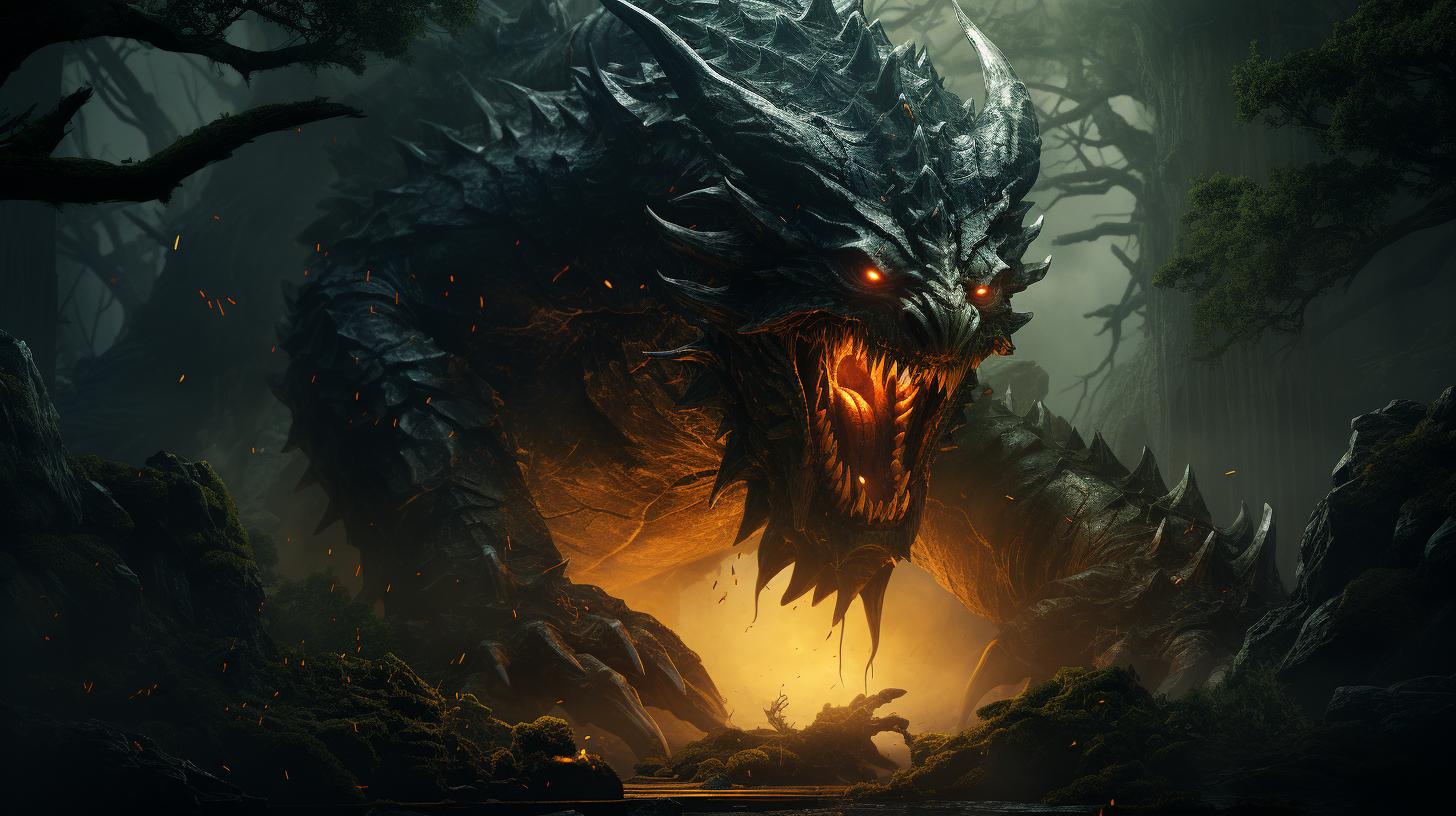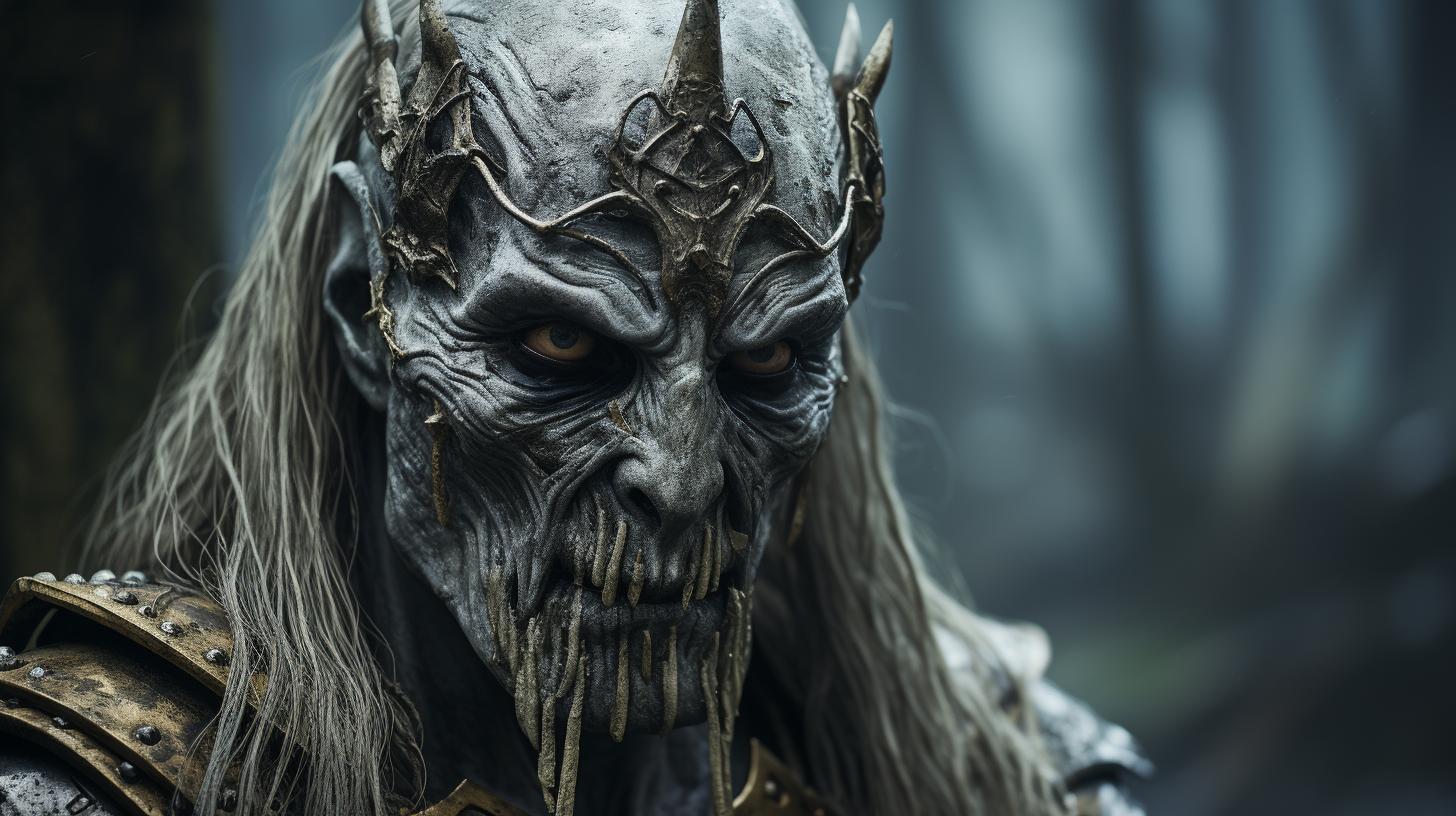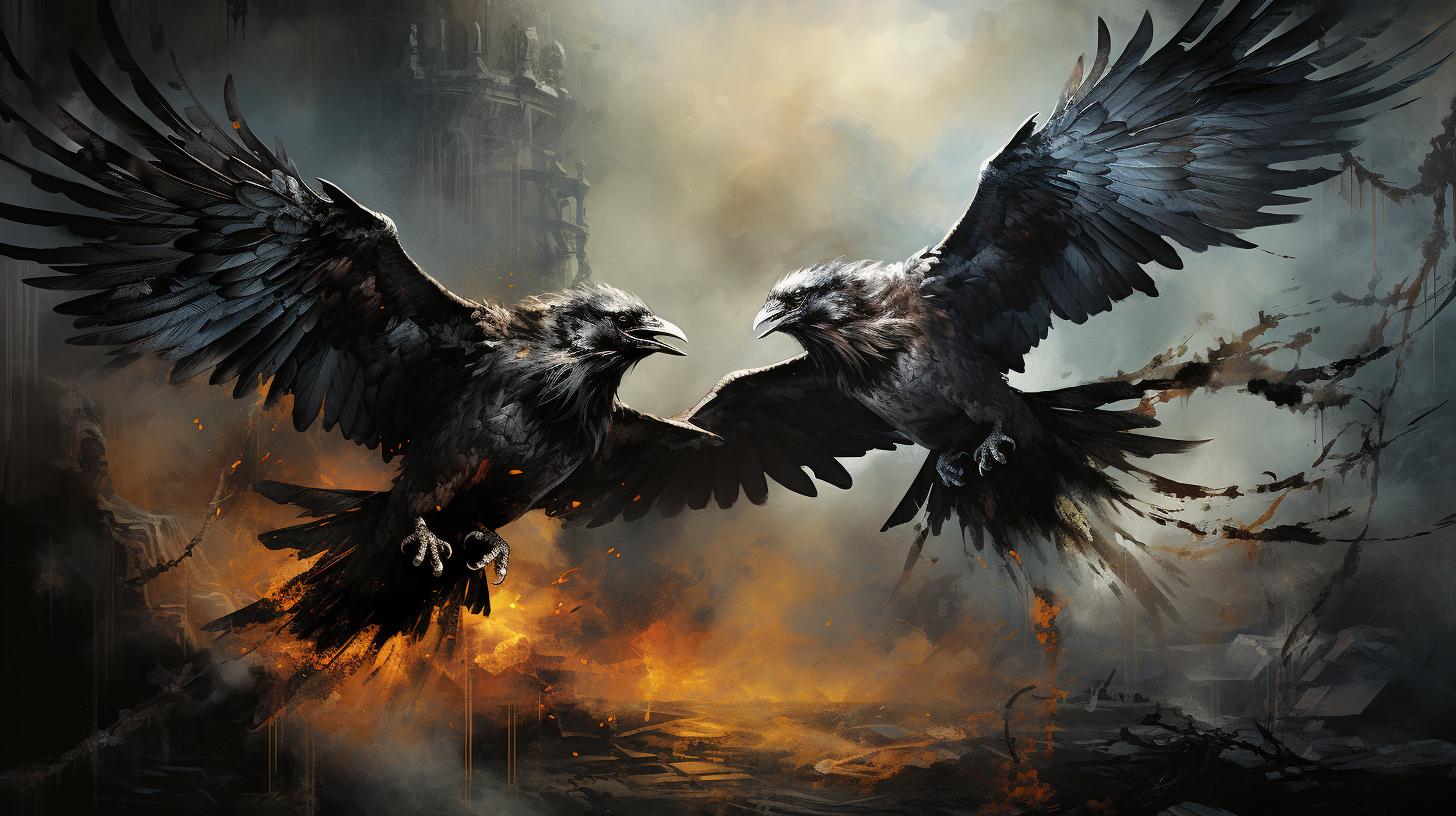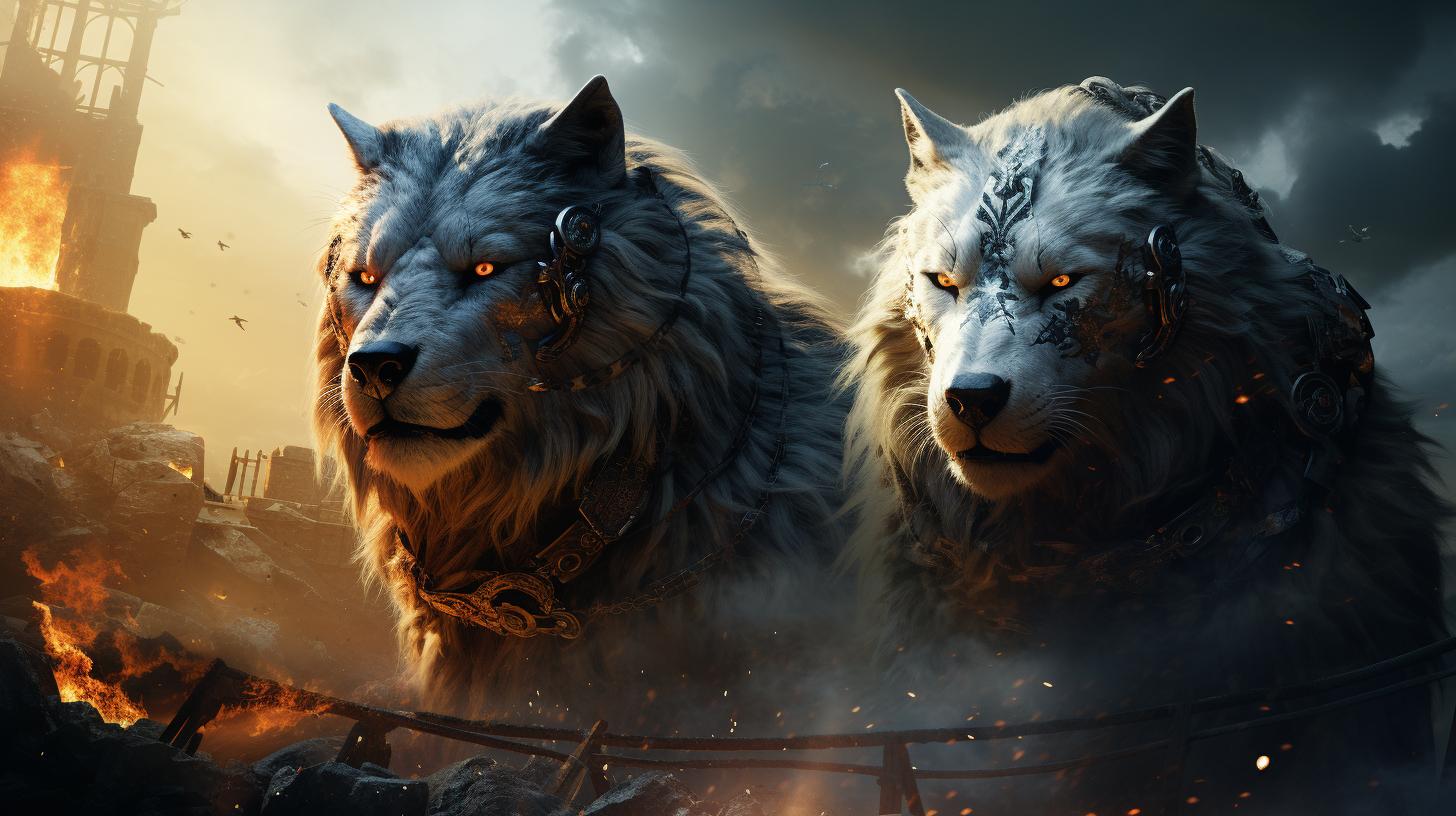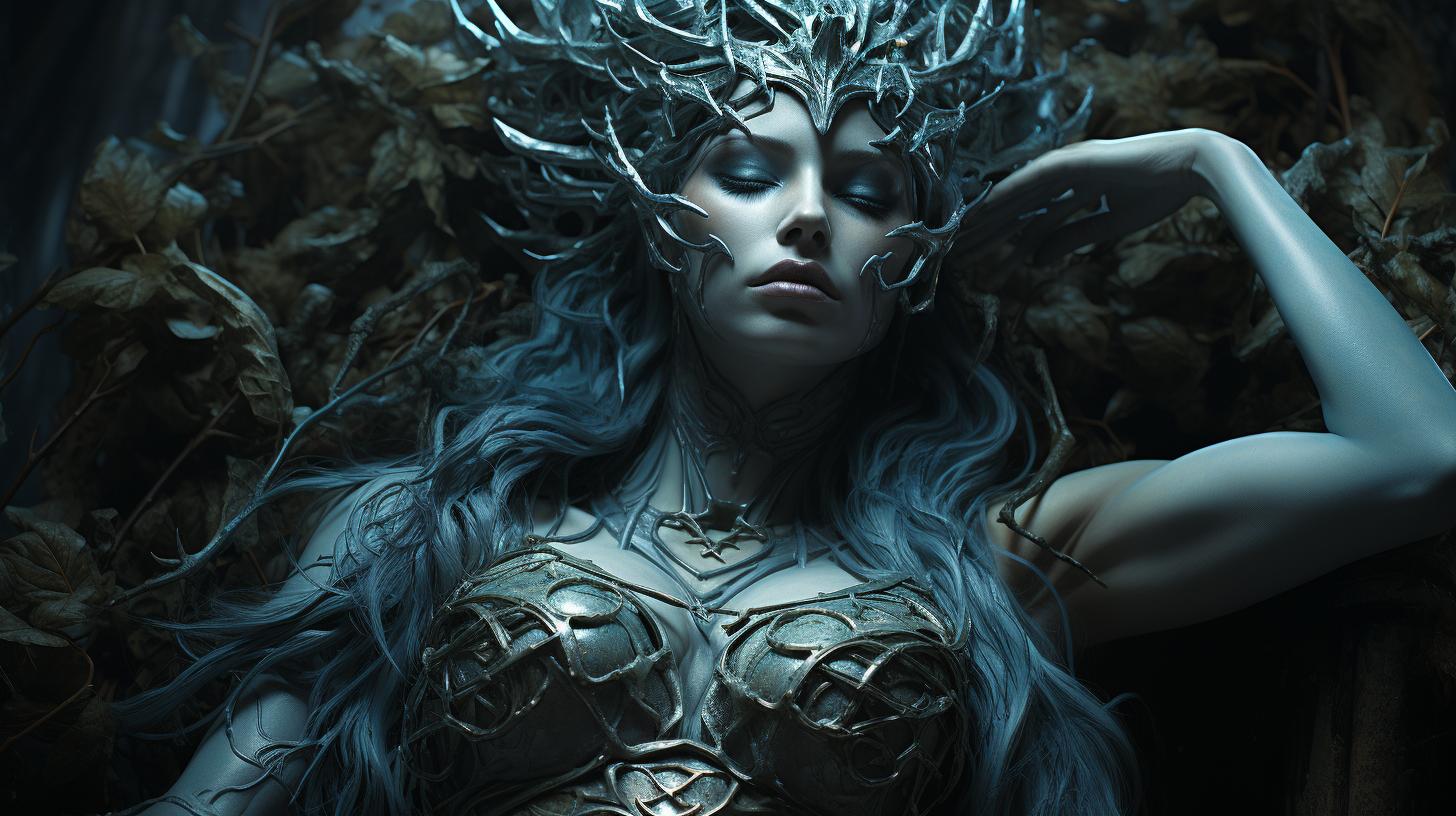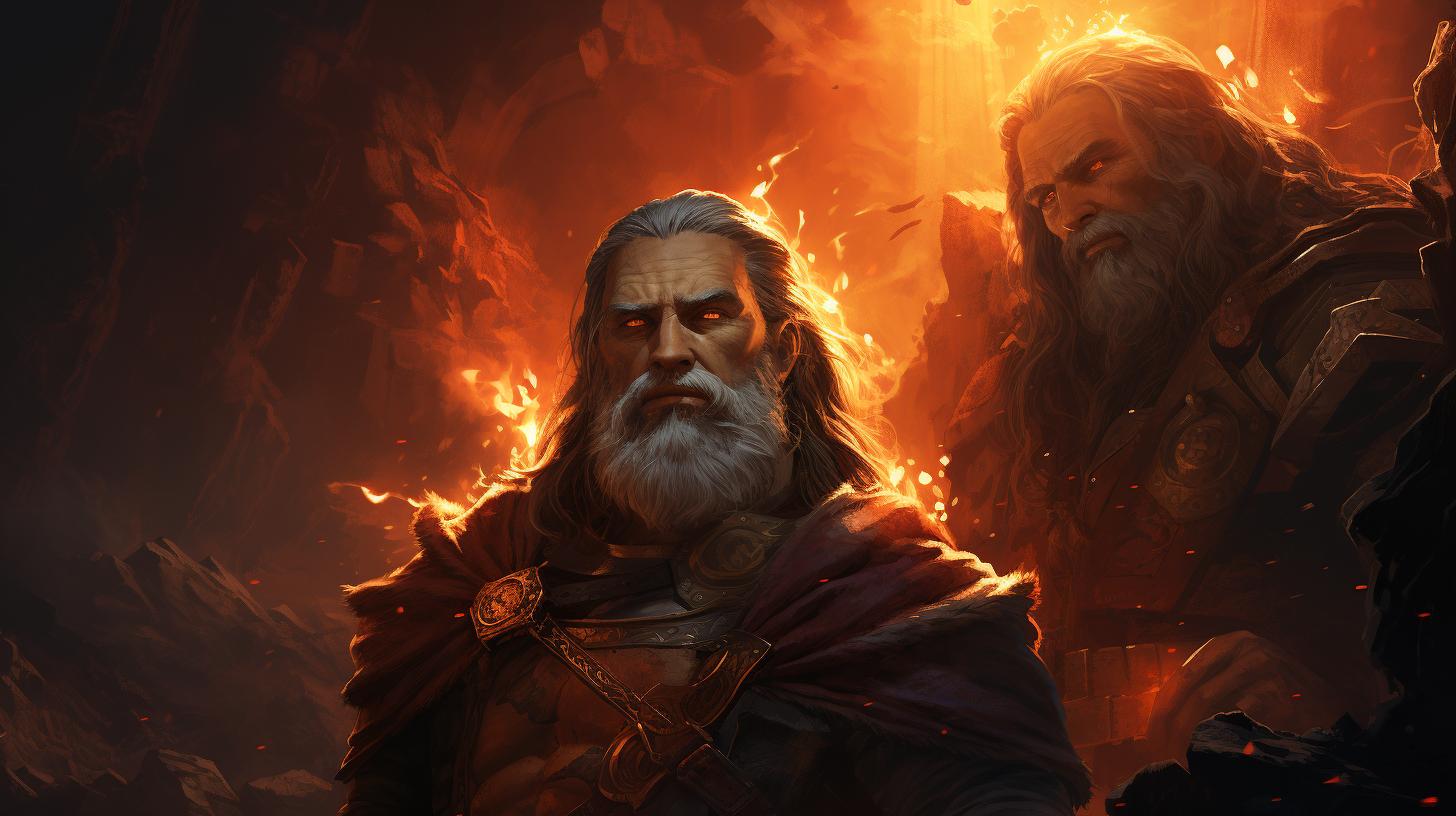Norns Norse Mythology: Powerful Female Beings Shaping Fate in Norse Lore
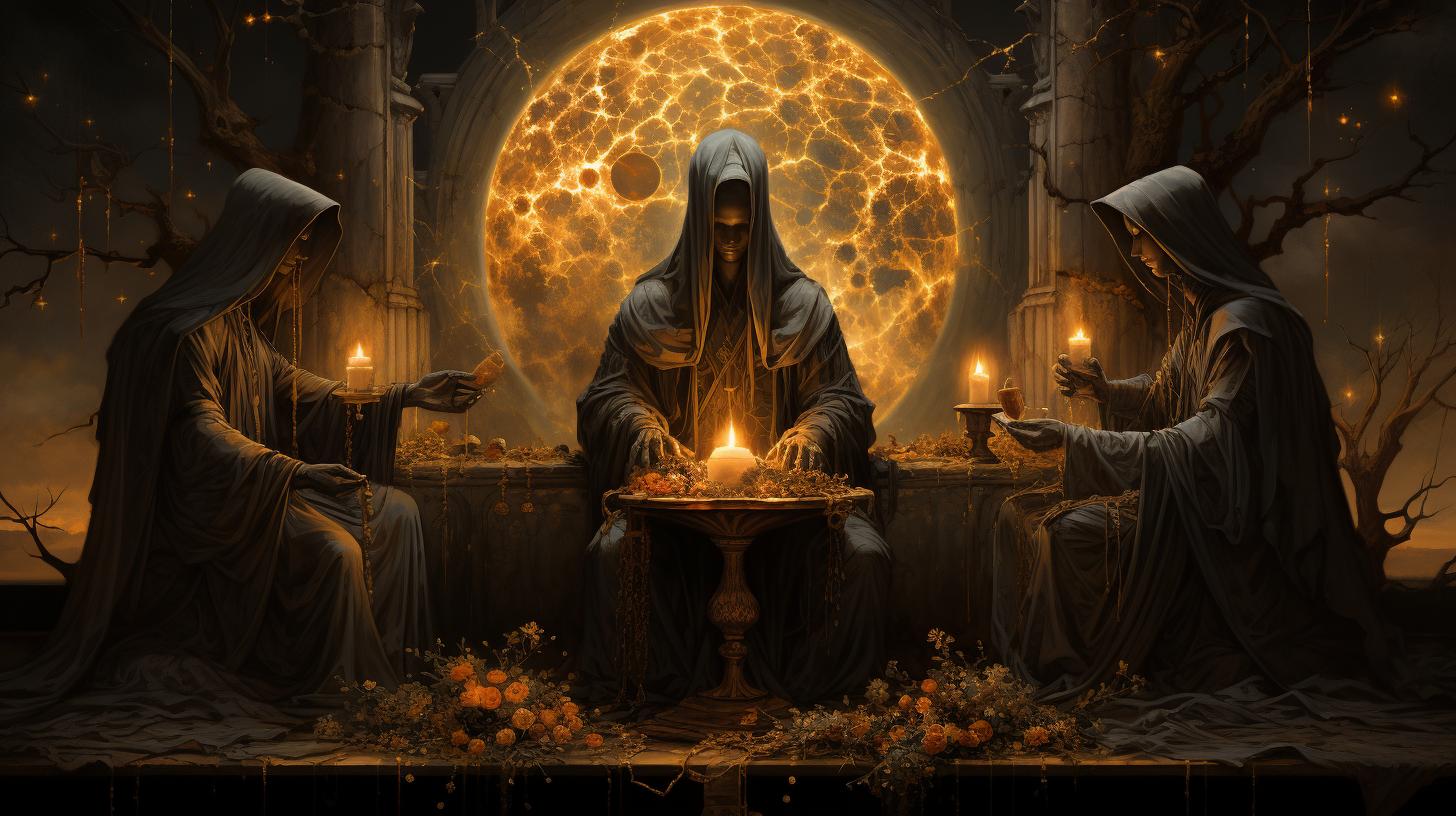
Norns Norse mythology plays a significant role in Norse lore, representing powerful female beings who control the fate and destiny of both gods and humans. These goddesses of fate, often depicted as three sisters named Urd, Verdandi, and Skuld, reside beneath the World Tree, Yggdrasil.
They weave the threads of life and determine the length and course of each individual’s existence. Associated with the sacred Well of Urðarbrunnr, the Norns exert their influence over the gods and mortals alike.
Additionally, their presence and impact extend beyond ancient mythology, persisting in Scandinavian culture and inspiring various forms of artistic representation in literature, art, and popular media.
Overview of Norns Norse Mythology
The Norns, revered figures in Norse mythology, hold immense importance in shaping the destinies of gods and humans.
As goddesses of fate and destiny, their presence and actions play a vital role in the unfolding of events in the Norse mythological realm. This section provides an overview of the Norns’ significance, their connection to the ancient Norse language and lore, and their role as embodiments of fate and destiny.
The Role and Significance of Norns in Norse Mythology
The Norns have a central role in determining the fate of both deities and mortals in Norse mythology. As powerful female beings, they wield the power to shape the course of individuals’ lives, weaving the threads of destiny with their profound knowledge and mystical abilities.
Their influence extends beyond mere divination, as they actively participate in the tapestry of existence, confronting both gods and men with the consequences of their actions and choices.
Norns in Old Norse Verb and Norse Lore
The term “Norn” has its roots in Old Norse, reflecting the significant linguistic connection between the Norns and the ancient Norse culture.
References to these divine figures can be found in various Old Norse texts, including iconic literary works and mythological sagas. They are symbols of the deeply ingrained belief in predestination and the interconnectedness of the past, present, and future in Norse mythology.
Norns: Goddesses of Fate and Destiny
Elevated to the status of divine entities, the Norns symbolize the forces governing fate and destiny in the Norse mythological realm. Urd, Verdandi, and Skuld, the three primary Norns, respectively represent the past, present, and future.
Through their intricate knowledge and mystical abilities, they continuously shape the lives of both gods and mortals, leaving an indelible mark on the unfolding of events and the cosmic order.
As a central theme in Norse mythology, the role and significance of the Norns provide a profound understanding of the deeply rooted belief in fate, destiny, and the interconnectedness of all beings.
The Three Norns
The Norns in Norse mythology are represented as three powerful sisters who shape the destiny of gods and humans. Each Norn embodies a specific aspect of time and fate.
Urd: The Norn representing the Past
Urd, the first of the Norns, symbolizes the past.
She is associated with memory and the accumulated wisdom of history. Urd’s presence reminds us of the influence that past events have on the present and future. She weaves the threads of the past into the tapestry of life, shaping the course of individuals and societies.
Verdandi: The Norn representing the Present and the Viking Age
Verdandi, the second Norn, embodies the present moment. She is linked to the concept of the “Now” and the importance of seizing the opportunities that arise in the present. Verdandi’s influence is particularly significant during the Viking Age, a time of exploration, conquest, and cultural transformation.
Skuld: The Norn representing the Future and Prophecy
Skuld, the third Norn, governs the future and holds the power of prophecy. She is the weaver of the tapestry’s yet unwoven threads, shaping the events yet to come. Skuld’s presence serves as a reminder of the potential outcomes that lie ahead and the uncertainty of what awaits individuals and civilizations in the future.
Together, Urd, Verdandi, and Skuld represent the interconnectedness of time and the inexorable nature of fate. Their combined influence shapes the lives of gods and humans, driving the unfolding of events in Norse mythology.
Norns in Norse Mythology
The Norns, powerful female beings in Norse mythology, play a significant role in shaping the destiny of gods and mortals. Let’s explore their interactions with the gods, their connection to Yggdrasil, the World Tree, and their association with the sacred Well of Urðarbrunnr.
Norns and their Interactions with the Gods
The Norns have a profound impact on the lives of the gods in Norse mythology. They hold the power to determine the fate and future of these divine beings. Through their threads of destiny, the Norns guide and influence the actions of the gods, reminding them that even their divine status does not exempt them from the predetermined course set by fate.
Norns and their Connection to Yggdrasil, the World Tree
Yggdrasil, the majestic World Tree, serves as the dwelling place for the Norns. They reside beneath its roots, weaving and entwining the threads of life and fate. As they spin their magic, they ensure the stability and preservation of this sacred tree, nurturing it with the waters from the Wells of Urðarbrunnr.
The Norns’ connection to Yggdrasil represents their integral role in the delicate balance of the cosmos.
Norns’ Association with the Sacred Well, Urðarbrunnr
The Norns derive their power from the sacred Well of Urðarbrunnr. This mystical well holds the essence of destiny and provides the life-giving waters that sustain Yggdrasil. Drawing water from Urðarbrunnr, the Norns bestow blessings or pronounce fateful decrees upon gods and mortals alike.
They hold the key to the past, present, and future, influencing the course of events through the delicate act of measuring, spinning, and cutting the threads of life.
Through their profound interactions with the gods and their connections to Yggdrasil and the sacred Well of Urðarbrunnr, the Norns personify the intricate tapestry of fate and shape the destinies of both divine and mortal beings.
- Norns and their role in shaping destiny
- Interactions between Norns and gods in Norse mythology
- The significance of Yggdrasil, the World Tree, to the Norns
- Association between the Norns and the sacred Well of Urðarbrunnr
Norns in Popular Culture
The Norns of Norse mythology have left a lasting impact on popular culture, appearing in various forms of entertainment and artistic expression.
Their enigmatic nature and role as weavers of fate have captivated audiences, making them a fascinating subject for exploration in literature, art, and entertainment.
Norns in God of War: Skuld’s Role and Interpretation
In the popular video game franchise God of War, the character Skuld represents one of the Norns.
Skuld plays a crucial role in the narrative, embodying the concept of fate and destiny. She appears as an enigmatic oracle, foretelling the protagonist’s journey and offering glimpses of the future.
Skuld’s portrayal showcases the Norns’ influence on the unfolding events and highlights their connection to the larger mythological universe depicted in the game.
Representation of Norns in Literature, Art, and Entertainment
The Norns’ presence extends beyond gaming into other forms of media, including literature, art, and entertainment.
In various novels, the Norns are depicted as powerful beings who shape the destinies of characters, whether hero or villain. Their involvement adds depth and intrigue to the storytelling, making them pivotal figures in the narrative arcs.
The visual arts also draw inspiration from Norse mythology, and the Norns are a popular subject for paintings, sculptures, and illustrations. Artists capture their ethereal beauty and their role as weavers of fate, often depicting them alongside Yggdrasil, the World Tree, and their sacred well.
These representations allow viewers to engage with the rich mythical heritage and reflect on the complex interplay between destiny and choice.
Furthermore, the Norns have influenced the world of entertainment beyond traditional mediums.
Their essence permeates music, with references to their mythos appearing in song lyrics and album titles. The heavy metal band Amon Amarth released an album titled ‘Fate of Norns’ in 2004, paying homage to these ancient and powerful figures of Norse mythology.
The enduring presence of the Norns in popular culture reflects the timeless fascination with their role as weavers of fate. Their portrayal in various mediums continues to captivate audiences and serves as a reminder of the enduring power of mythology in shaping our collective imagination.
The Influence of Norns in Norse Society
The Norns played a significant role in Norse society, exerting their influence on human lives and choices. Their presence permeated every aspect of existence, shaping both individual destinies and collective fate.
Norns and their Impact on Human Lives and Choices
The Norns’ power extended to the lives of mortals, for they controlled the threads of fate. Their careful weaving affected the course of events, guiding individuals along predestined paths. This belief instilled a sense of resignation, as people acknowledged the Norns’ authority over their lives and accepted the consequences of their choices.
Moreover, the Norns’ influence went beyond simple determinism. They served as reminders of the interplay between destiny and personal agency. Despite predetermined destinies, humans had the freedom to make decisions within the framework set by the Norns.
This delicate balance between fate and individual choice added complexity and depth to Norse society’s understanding of human existence.
Offerings and Veneration of the Norns
As revered figures, the Norns received offerings and veneration from those seeking their favor. Individuals sought to appease these powerful deities, recognizing their immense power over the unfolding of lives. Offerings ranged from simple gestures of respect to more elaborate rituals, expressing gratitude and seeking blessings.
Such acts of reverence demonstrated the enduring belief in the Norns’ ability to shape lives and their significance within Norse society.
Persistence of Norns’ Beliefs in Scandinavian Culture
Even with the advent of Christianity, the beliefs surrounding the Norns persisted in Scandinavian culture. These ancient concepts intertwined with Christian teachings, forming a unique syncretism. The influence of the Norns endured in folklore, folk traditions, and cultural practices, representing a testament to their lasting impact on the collective imagination.
Through stories, songs, and oral traditions, the Norns remained enmeshed in the fabric of Scandinavian society, ensuring their legacy continued to thrive. Their profound influence extended far beyond ancient Norse mythology, shaping the cultural identity and understanding of destiny for generations to come.
.












